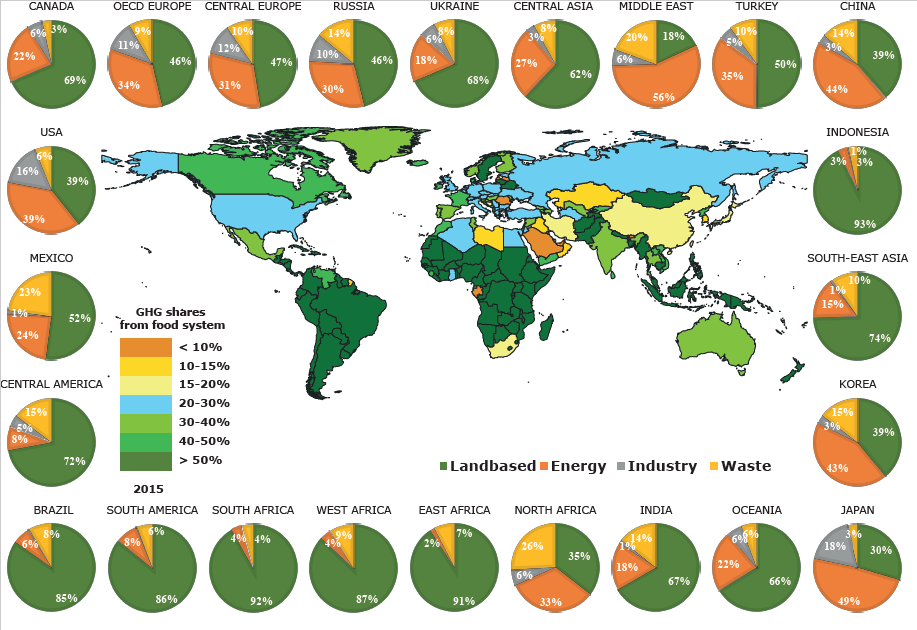
The JRC developed a new global food emission database (EDGAR-FOOD) estimating greenhouse gas (GHG) emissions for the years 1990-2015. It is the first emission database of GHGs covering all countries and sectors of the food system, from production to disposal.
Once food is farmed, harvested or caught, it needs to be transported, processed, packaged, distributed and cooked, and then any residuals disposed of. All these steps use energy and result in direct and indirect emissions spread across most economic sectors worldwide. A third of global greenhouse gas (GHG) emissions are related to food, according to the results of this new JRC study.
EDGAR-FOOD provides an unprecedented picture of how an evolving food system has responded to the evolution of world population in the last 25 years, driven among others by changes in welfare, dietary habits and food related technology.
Main findings
- A third of global and 30% of EU greenhouse gas emissions (EU 27 countries range 25-42%) comes from the food system.
- The global food system is becoming more energy intensive, with almost a third of food system emissions coming directly from energy-consumption. Globally, energy use at the farm gate is also increasing.
- On average, the food system produces 2 tons of carbon dioxide equivalent (CO2eq) emissions per person every year.
- About half of the GHG emissions are CO2, mainly linked to land use change and energy, one third is methane (CH4) due to livestock and rice production, but also waste management; most of the rest is emitted as N2O from nitrogen fertilisers. F-gases still play a minor role but they are increasing.
- Emissions from the retail sector have been increasing rapidly (up to 3 times higher emissions compared to 1990) at the global level. A functioning “cold chain” is important to reduce food spoilage; industrial and domestic refrigeration currently account for 5% of global GHG food systems emissions, but due to low per capita refrigeration capacity in developing countries their importance is likely to increase.
Towards a more sustainable and informed consumption pattern
EU citizens expect sustainable food with low greenhouse gas footprints, and transparent, robust data are needed to understand the complexity of food systems, analyse the emissions from the different food stages and support the development of policy tools for the transition to a more sustainable and informed consumption pattern.
Effective policies to transform food systems towards sustainability need to be comprehensive, and provide answers for both economy and consumers, with adequate information.
The share of GHG emissions linked to energy use and industrial processing is increasing. The food system will therefore need to invest in energy efficiency and decarbonisation technologies to reduce GHG emissions, in addition to land-based mitigation technologies within and outside the farm gate.
The completeness of the EDGAR-FOOD database is an important asset for monitoring global food system GHG emissions as part of integrated GHG emission mitigation strategies for the food system, such as the European Commission’s Farm to Fork strategy.
Background
The EDGAR-FOOD database has been presented in Nature Food Journal.
The database contributes to the Sixth Assessment Report of the Intergovernmental Panel on Climate Change (IPCC) (Working Group III on climate mitigation) which represents the scientific basis for policy makers in the field of climate change.
EDGAR-FOOD builds upon the JRC’s Emission Database for Global Atmospheric Research (EDGAR), complemented with land use/land use change emissions from the FAOSTAT emissions database.
Related Content
Nature Food: Food systems are responsible for a third of global anthropogenic GHG emissions
Details
- Publication date
- 9 March 2021
